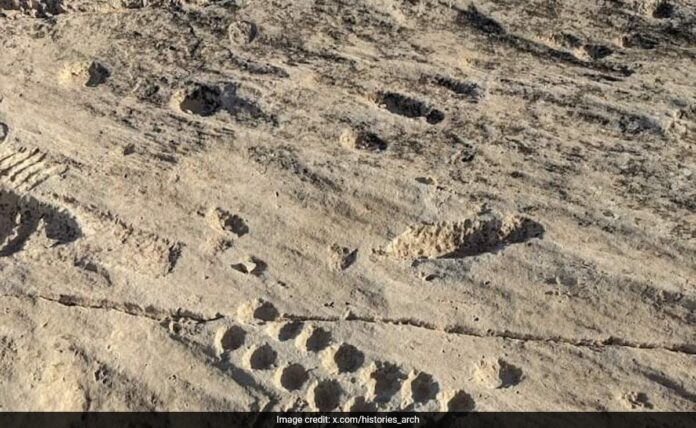In the northeastern corner of Qatar, lies Al Jassasiya, the country’s largest and most significant rock art site. This barren desert landscape is home to approximately 900 ancient rock carvings, or petroglyphs, created centuries ago.
The carvings, mostly enigmatic cup marks arranged in various patterns, also feature sailing ships, symbols and signs. “Some of the carvings in Al Jassasiya are unique and cannot be found anywhere else,” Ferhan Sakal, head of excavation and site management at Qatar Museums told CNN. He highlighted the petroglyphs of ships seen from a bird’s-eye view, demonstrating “a high degree of creativity and observation skills” by the artists.
Some researchers suggest these marks may have been used for playing the board game Mancala, while others cite their use in rituals or for sorting pearls.
“It is very difficult to answer,” Mr Sakal acknowledged regarding the purpose of the cup marks. “We have no direct clues about the motifs used in Al Jassasiya,” he said.
The age of the carvings remains uncertain, with estimates ranging from Neolithic to late Islamic times. Mr Sakal said, “Petroglyphs – and rock art, in general – are very challenging to date.”
A previous study found no evidence of the carvings being more than a few hundred years old, but further research is needed.
The ship carvings at Al Jassasiya provide important insights into Qatar’s fishing and pearling industries. These vessels typically feature pointed stern and detailed designs, with some anchors indicating traditional maritime practices.
Experts speculate on the significance of the high concentration of ship carvings at Al Jassasiya, with references to ancient beliefs surrounding boats as symbols of transition to the afterlife.
Visitors to Al Jassasiya are advised to take water and wear sun protection, as the site lacks shaded areas. The best times to visit are at sunrise and sunset, and the site is located near Azerbaijani Beach.




